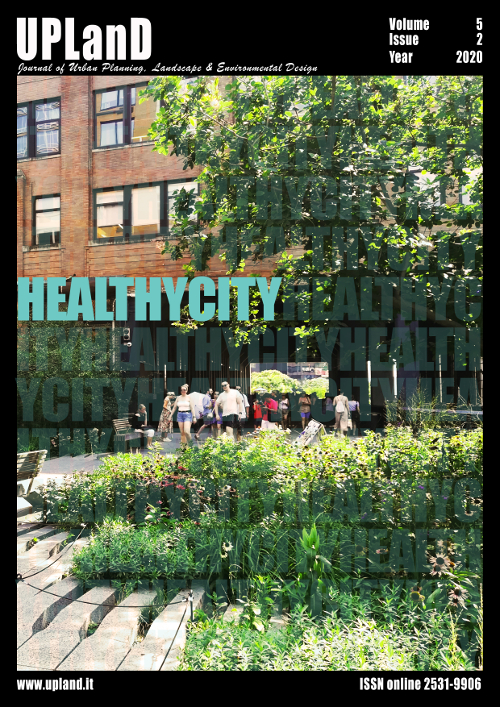Planning resilient cities: The case of Chania
Main Article Content
Abstract
Today’s societies face intense problems caused by rapid urbanization and land degradation, globalization and socio-economic poverty, global warming and climate change that affect the world and can be the cause of natural disasters. According to the United Nations ‘‘urban risk, city planning and the role of local governments in dealing with risk reduction have been recognized as key factors to build resilient communities and nations’’ (United Nations, 2010) Physical exposure to disasters can affect not only the informal settlements that carry physical vulnerabilities due to their location or construction practices. In many cases, ‘‘formal’’ urban areas are as well vulnerable due to the absence of adequate building standards and urban planning that would reduce disaster risk by physical exposure.
The current paper will focus on the coastal city of Chania and its vulnerability because of the lack of urban planning. The case study is selected because it concentrates the characteristics of a typical coastal Greek city, which faces rapid demographic growth and unplanned urban and touristic expansion. The examined city has been diachronically influenced by the liberalization of construction regulations, an unqualified private sector emerged, hastily developing housing mostly with government oversight and without building permits.
Downloads
Article Details
- Authors retain copyright and grant the journal right of first publication with the work simultaneously licensed under a Creative Commons Attribution License that allows others to share the work with an acknowledgement of the work's authorship and initial publication in this journal.
- Authors are able to enter into separate, additional contractual arrangements for the non-exclusive distribution of the journal's published version of the work (e.g., post it to an institutional repository or publish it in a book), with an acknowledgement of its initial publication in this journal.
- Authors are permitted and encouraged to post their work online (e.g., in institutional repositories or on their website) prior to and during the submission process, as it can lead to productive exchanges, as well as earlier and greater citation of published work (See The Effect of Open Access).
References
Beauregard , R. (2003). Democracy, storytelling, and the sustainable city. In B. Eckstein, & J. Thogmorton, Story and sustainability, pp. 65-77. MIT Press.
Bronski, P., Elder, J., Freed, A., Holland, B., Nanavatty, R., Nelder, C., & Petersen, A. (2020). Coming back stronger: A City-Driven Infrastructure Agenda for a Cleaner, more Resilient, more Equitable America. Bloomberg Philanthropies and Rocky Mountain Institute.
Cardona, O. D. (2004). The need for rethinking the concepts of vulnerability and risk from a holistic perspective: a necessary review and criticism for effective risk management. Mapping vulnerability: Disasters, development and people, 17, 37-51.
European Civil Protection and Humanitarian operati. (2019). Greece: European Civil Protection and Humanitarian Aid Operations Service tools. Retrieved from: https://ec.europa.eu.
European Commission. (2019). The Environmental Implementation Review 2019. Retrieved from: https://ec.europa.eu.
Georgi, J. N., & Dimitriou, D. (2010). The contribution of urban green spaces to the improvement of environment in cities: Case study of Chania, Greece. Building and environment, 45(6), 1401-1414.
Jha, A., Miner, T., & Stanton-Geddes, Z. (2013). Building Urban Resilience: Principles, tools and practice. International Bank for Reconstruction and Development / The World Bank. doi: 10.1596/978-0-8213-8865-5.
Knaapen , A., Seiler , F., Schilderman, P., Nehls P , P., Bruch, J., Schins , R., & Borm , P. (1999). Neutrophils cause oxidativeDNA damage in alveolar epithelial cells. Free Radic BiolMed; 27, 234-40.
Martin-Breen, P., & Anderies, J. (2011). Resilience: A Literature Review. TheRockefeller Foundation.
Ministry of Environment and Energy. (2018). Report on the long-term strategy to mobilise investment in the renovation of private and public residential and commercial buildings in the national building stock, 2nd edition. Athens: Ministry of Environment and Energy.
Ministry of the Environment and Energy. (2017). National plan for increasing the number of nearlyzero-energy buildings.
Olshansky, R., & Kartez , J. (1998). Managing land use to build resilience. In R. Burby , Cooperating with nature: confronting natural hazards with land-use planning for sustainable communities (pp. 167–201). Washington, US: Joseph Henry Press,
Pickett, S., Boone , C., McGrath, B., Cadenasso, M., Childers, D., Ogdene, L., Grove, M. (2013). Ecological science and transformation to the sustainable city. Cities, 32(1), S10-S20. doi: 10.1016/j.cities.2013.02.008.
Ministry for the Environment, Physical planning and Public Works (2006), Report of Greece on coastal zone management.
Sgobbo, A. (2017). Eco-social innovation for efficient urban metabolisms. TECHNE Journal of Technology for Architecture and Environment, 14, 337-344. doi: 10.13128/Techne-20812
Steven, A., Appeaning Addo, K., Llewe, G., & Thanh Ca, V. (2020). Resilience, Restoration and Infrastructure Requirements. Retrieved form: http://www.oceanpanel.org.
Thomopoulou , E., & Stathakis, D. (2016, September). Προσαρμογή στην κλιματική αλλαγή και Χωρικός Σχεδιασμός (in Greek). http:// ir.lib.uth.gr › bitstream › handle.
UNISDR. (2009, January 15). UN International Strategy for Disaster Reduction. http://www.unisdr.org/eng/library/lib-terminology-eng.htm.
United Nations. (2010). Local governments and disaster risk reduction: good practices and lessons learned. Geneva: UNISDR.

